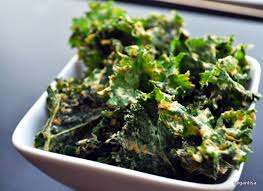Our brains are made up of an intricately interconnected web of neurons, run by electrical impulses that jump from cell to cell across gaps called synapses. Chemical messengers help transmit those impulses, and this symphony of cells, chemicals and electricity results in all the thoughts, feelings and bodily functions that make us who we are. Age related memory loss and Alzheimer’s disease are examples of neurodegenerative conditions, and affect as many as 30% of the population over 70. Drugs for Alzheimer’s disease have limited benefit, at best slowing progression. The cause of Alzheimer’s is too complex for us to ever find a solution in a pill bottle. The brain is intimately connected to the rest of the body. Dysfunction in the body can damage the delicate components of the brain. Cognitive decline is the result of a long trajectory of multiple stresses on the brain, many of which can be reduced by lifestyle change and natural medicine.
When scientists study the brains of people with Alzheimer’s they find amyloid plaques and neurofibrillary tangles from excess Tau protein. It is normal for these proteins to form, and the body has process to flush them out. When excess amyloid and tau are formed, or not cleaned out, nerve signalling is impaired and shrinkage of key centres of the brain speeds up. Dementia was once thought to be progressive and irreversible. We know now that buildup of amyloid plaques and neurofibrillary tangles are the result of years of stress on the brain such as neuroinflammation, oxidative stress, mitochondrial dysfunction (energy production in cells), high blood sugar / insulin, microbiome (intestinal bacteria) imbalances and more. New research shows that these processes can be prevented and reversed which can preserve or improve cognitive function. There are strategies that can also increase a healthy chemical in the brain called brain derived growth factor, promote neurogenesis (expansion of nerve cells), enhance the clearing of amyloid and Tau proteins (autophagy), and build new pathways in the brain (promote neuroplasticity).
I help my patients accomplish these goals by coaching them on how to create a lifestyle conducive to a healthy brain. Food is your best brain medicine, so that’s where I start with my patients. Lack of sleep or use of pharmaceutical sleep aids are both associated with memory loss as it is during sleep that the brain clear amyloid. Exercise increases brain-derived-growth-factor. Sustained aerobic exercise is particularly beneficial for preventing shrinkage of the brain’s memory centres. The gut-brain connection is important for brain health too, so improving digestion is key, as is stress reduction, and brain exercises.
I also educate my patients on the use of a few key natural medicines that have been researched to improve brain health. For instance, a study of people taking the DHA component of fish oil showed an improvement in memory after six months. Resveratrol is a grape skin extract that helps to inhibit the creation of and promote the clearance of amyloid and tau, delaying the onset and progression of cognitive impairment. Curcumin, a turmeric extract, supports neuron regeneration, reduces neuroinflammation and helps clear amyloid plaques. Coenzyme Q10, Vitamin D and many other natural medicines also have shown benefits for dementia. A ground-breaking study was conducted on 11 people diagnosed with early Alzheimer’s disease or cognitive impairment, most of whom had the Alzheimer’s gene. They were given a multifactorial naturopathic protocol of lifestyle changes and natural medicines. All but the one most advanced case had reduction in symptoms sufficient to reverse the diagnosis of Alzheimer’s and some showed increased brain volume on scans. It is this multi-faceted approach to brain health that is necessary to keep our brains healthy and functioning well so we can live long and full lives.







